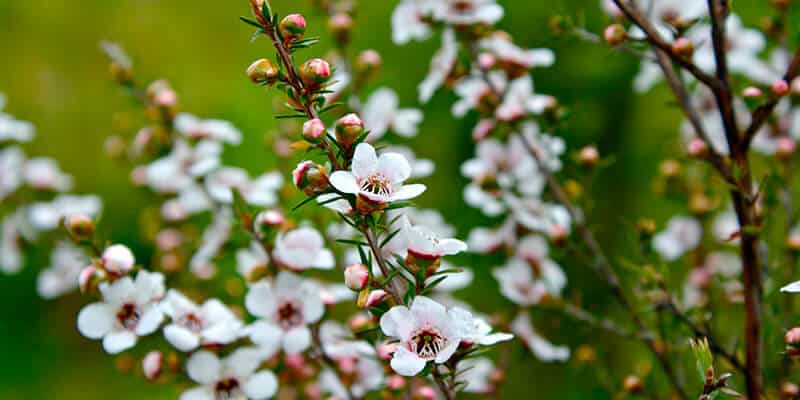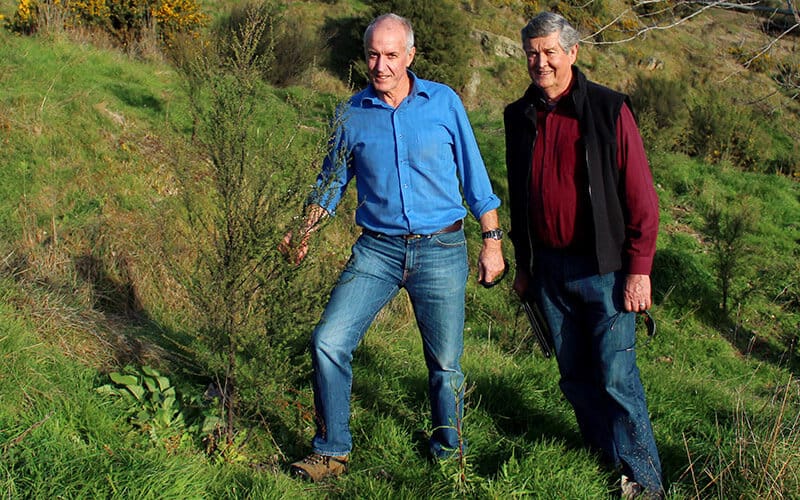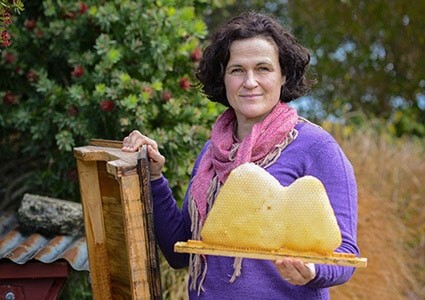With global demand outstripping supply, and the need for more stringent regulation and control, Comvita (our largest premium mānuka honey producer) has partnered with the Ministry for Primary Industries to develop high-performance mānuka plantations as a viable, profitable crop.
The irony is that not all that long ago farmers were being incentivised to rip out their regenerating mānuka stands (the honey, classed as inferior, was fed to stock). And now what was once, for agricultural intents and purposes, a native weed, presents a potential boost to wealth, health and our clean green brand.
As marketing consultant Lucy Griffiths says: “Mānuka’s gone from zero to hero and business is booming!”
Magical Mānuka
For thousands of years honey was used for treating infections, before the advent of penicillin and wide-spread antibiotics in the 1940s relegated its therapeutic qualities to folklore. But in the post-antibiotic era of the superbug there’s been a resurgence of interest.
Honey’s antimicrobial activity is such that it’s been described as an ‘antibacterial system’, with a raft of anti-inflammatory, immuno-stimulatory and antioxidant properties, and no more so than New Zealand mānuka honey.
Thanks to the pioneering work of biological scientist Peter Molan, high-active mānuka honey is recognised within the medical establishment as an effective treatment for infected wounds, burns and ulcers, able to clear entrenched antibiotic-resistent pathogens such as MRSA (a staph bacteria strain) like magic. In the US alone, where more than 18,000 people die each year from MRSA infections, mānuka honey wound-dressings and topical gels are taking off in a burgeoning multi-billion dollar industry.
So what is the ‘unique mānuka factor’? Professor Molan discovered that honey from native mānuka (Leptospermum scoparium) contains non-peroxide antimicrobial activity (NPA), in addition to the hydro-peroxide activity found in other honeys. The compound responsible has since been identified as DHA (dihydroxyacetone), which is found abundantly in mānuka nectar, and is converted in the bee’s honey-making process into MGO (methylgyoxal) – the compound medical-grade honey is rigorously tested for.
There is considerable variance between DHA levels in mānuka plants, even within a localised area, so not all mānuka honey will have a high NPA. The standard testing for NPA (using phenol comparison, otherwise known as carbolic acid) gives the well-known UMF® scale 5+, 10+, 15+, etc.
Kānuka honey (also high in antibacterial activity) is sometimes wrongly marketed as mānuka. It’s a different genus (Kunzea), but displays similar characteristics; for example, there’s no discernible difference between pollen samples. But kānuka doesn’t have DHA nor do any of the Australian Leptospermum varieties. The unique mānuka factor is absolutely unique.
Land use opportunities
Professor Peter Molan is concerned there won’t be enough high-activity mānuka honey to carry out its important work in fighting antibiotic-resistant pathogens, particularly as demand takes off in China, where natural medicines form an integral approach to health. His plea to rural landowners: “Please get planting – the world needs you!”
In May, the Hawke’s Bay Regional Council and forestry group Woodnet hosted a seminar on ‘Mānuka and profitable marginal land use’, which was attended by some 300 people, twice the number expected and indicative of the building interest in this field.
Campbell Leckie, HBRC’s manager for land services, believes effective land-use solutions are critical for our region’s future. With increasing weather events due to climate change, which exacerbate erosion (already a significant issue) and loss of agricultural productivity, it’s imperative we find smarter ways to farm, particularly in our hill country with its areas of steep or marginal land.
The beauty of utilising mānuka is that it’s a pioneer species – hardy, resilient – playing an important role in native bush regeneration. Following the 25-year lifespan of a mānuka plantation, the land could be left to become a second-tier podocarp forest, addressing the issue of declining biodiversity. For retiring marginal land there are government subsidies available, and with vegetation cover, carbon credits. Mānuka could also be planted as shelter belts or riparian strips, as erosion prevention, or for stock to graze amongst once established.
Meanwhile it could deliver in honey dividends, and subsidiary products like mānuka oil, an internal rate of return (IRR) more favourable in many instances than pastoral farming or forestry, where “traditional land uses are no longer having the traditional revenues that go with them,” as forestry consultant Stuart Orme observes.
Leckie sees mānuka as “a potential part of a solution to balancing our environmental and economic needs”. It’s for this reason that HBRC has invested in trialing high-performance mānuka (with a 156-hectare plantation at Tūtira). The council is a key player in Mānuka Research Project Ltd and, along with Comvita, an active participant in the Government’s Primary Growth Partnership programme, a nation-wide joint project, which runs from 2011-2018.
The project aims to increase both yield and supply: doubling the land area planted in high-DHA mānuka, doubling the number of hives that land can sustain, doubling the amount of medical-grade mānuka honey produced, and doubling the amount of mānuka honey harvested from hives. If successful, the value of the industry could grow from $75 million in 2010 to an estimated $1.2 billion per annum by 2027.
Initial results from the Tūtira site, which is planted (1,100 seedlings/ha) in three types of provenances and a replicated trial of cultivars, have so far been promising, with high survival rates, good growth and 100% blossom strike in the second year. The first significant flowering is expected this year, with floral maturity in 2019.
Comvita, established in the 1970s, has been instrumental in the development of mānuka honey as a therapeutic product; as the largest bee-product company in Australasia with an annual turn-over of $120 million, it is involved in the end-to-end production chain from innovative research to sophisticated marketing. Its apiary business, Kiwi Bee (originally a Hastings company, purchased by Comvita in 2008) manages some 36,000 hives around the country.
To encourage commercial trials, Comvita’s current arrangement with landowners is to pay out a 30% share of apiary revenue from the plantation – effectively a 50-50 profit split (the going rate is 10-15%). The company runs a plant-breeding programme for high-performance mānuka cultivars, and provides stock at cost.
John Burke (Comvita) says, with natural reversion mānuka, you can expect to average UMF 5+ with your honey harvest; with the Comvita cultivars you can anticipate UMF 15+ plus increased hive productivity, and a 13.8% IRR at maturity. An economically viable site would need to be 20 hectares minimum.
Trees for Bees
Mānuka blossoms for only 4-8 weeks between September and February, so what do bees feed on when the seasonal honey rush is over?
Linda Newstrom-Lloyd, a botanist researching pollen protein and the supply of bee forage in New Zealand for Landcare Research, believes “mānuka is a fantastic thing”, but that the industry is putting pressure on traditional beekeeping and has introduced another threat to their increasingly precarious livelihood and essential pollination services: overstocking.
Overstocking is prevalent in mānuka-growing regions, as increasing numbers of hives are brought in to cash-up on the DHA-nectar. This creates new demands for over-wintering sites, which are already pressured by the ongoing decline in floral resources due to intensive farming, land-use changes and weed elimination programmes.
Planting mānuka could be the solution to overstocking, but only if you also plant for bees, says Newstrom-Lloyd. Species should be selected to fill the pollen dearth gaps, for high-protein content and diversity.
Mānuka is not the food of choice for honey bees (in contrast to native bees), who prefer to feed on other pollen and nectar sources, if available, and forage within a 3-5 km radius. So consideration also needs to be made before planting as to what accessible competition may be flowering at the same time as mānuka.
Dr Newstrom-Lloyd recommends using native support species for marginal land because they’re more robust: flax, cabbage tree, tarata and five-finger are great bee-food sources. But many cultivated species provide excellent nutrition, such as oak, maple, flowering ash, and orchard crops like apple and pear. Willow is a keystone bee plant on farms. [See www.treesforbeesnz.org]
Planting for bees is an iterative process by design and will cut into establishment costs, but Newstrom-Lloyd believes it’s well worth it: “If you plant a few maples, a few oaks, you’ve got feed forever.” You’ll have healthier hives, thus better honey production, and you won’t have to buy supplemental food that’s good for emergency rations but not ongoing sustenance.
She advocates for having permanent residential hives rather than using migratory seasonal hives, and urges landowners to consider this when looking into commercial mānuka. As she sees it, if you plant a “mānuka orchard with supporting bee feed you will help supply the mānuka demand and take the pressure off native bees and pollination services.”
Campbell Leckie agrees that bee health and addressing the challenges faced by the beekeeping industry is crucial for Hawke’s Bay, with so many of our horticultural and agricultural industries dependent on bees for pollination.
HBRC sponsors Trees for Bees research (a Sustainable Farming Fund project) and actively encourages landowners to plant trees for multiple benefits, including bee forage. Linda has been working alongside, providing advice for the Tūtira plantation and on suitable plantings to maintain bees there year-round.
Leckie notes it’s too premature to ascertain what high-performance mānuka could mean for the Bay in actual figures – what scale of industry are we looking at? What scope for jobs, skills, collaboration? But personally, he’s excited by the potential it offers: “Mānuka honey is a holistic, natural product that’s unique to us and drives value in a high-quantum market.” That it also offers alternative land-use solutions for achieving better farm and environmental outcomes is the sweetener.
However, Leckie cautions that mānuka is not a silver bullet for our region, reiterating that it’s part of “an integrated solution” within a wider environmental, economic and social context.
He advises those considering planting mānuka to think it through carefully. For a start, keep in mind that honey is a natural commodity and there’s risks around that (prices go up and down; you have good years, bad years, etc.). Secondly, apiary management is key. It takes skill to manage bees and the honey harvest well, so you have to consider carefully who you will partner with. He says the regional council is more than happy to direct people to appropriate resources.
My take-home message from the recent seminar presentation is that the potential for high-UMF mānuka in Hawke’s Bay is huge, but there’s no place for cowboys and it’s going to take conscientious planning.
Linda Newstrom-Lloyd: “If we do this the right way, it’s a win-win all the way.” But if we do it wrong, she warns, the consequences to the wider ecosystem and regional economy could be dire.
Comvita’s John Burke concludes by saying, “If we can pull it off, we have a good news story for rural New Zealand.”
Bees Threatened
Humans and honey bees have a symbiotic relationship, in which a third of the world’s food crops are now dependent on bees for pollination, and with the spread of varroa mite and pathogens, honey bees can no longer survive as wild colonies.
But it seems they’re struggling to survive with us too. In the last decade we’ve witnessed unprecedented numbers of bees dying around the globe, with entire colonies succumbing to aggressive diseases, or since 2006, simply failing to return, abandoning queen, food and hive in what’s being termed Colony Collapse Disorder.
Every year the US now loses 30-40% of its bees to CCD, and bee numbers are on a steep decline, with similar figures in parts of Europe. No one knows exactly why, though there are plenty of theories: varroa mite and miticide-resistance, new parasites and diseases, crop monocultures, pesticides, electro-magnetic radiation….
Neonicotinoids are a class of neuro-active, systemic insecticides, chemically similar to nicotine (and yes, there are studies suggesting bees become addicted!). They were developed in the 90s and are now the most widely used insecticides on earth. They’ve been linked to CCD – in 2008 Germany banned them as a precautionary measure, and since 2013 the EU has restricted their use.
A recent literature review by an international taskforce of independent scientists concluded that neonics cause significant damage to bees, butterflies, earthworms and birds, while a new Harvard study analysing pollen from NZ found multiple neonics in all samples.
New Zealand’s MPI advises growers not to spray near hives and to avoid spraying budding and flowering plants, but the Green Party has called for the Government to put bees first and ban the use of neonics in pesticides.
But despite more than a decade of varroa mite, and the widespread use of neonics, our beehive numbers are doubling, numbers of registered beekeepers are on the rise, and there have been no confirmed incidences of CCD.
However, NZ Farmer recently reported on the mass losses of bees in the Coromandel last spring, resulting in a 40-60% drop in honey production for many commercial beekeepers ( ‘Bee colonies wiped out as new parasite spreads through New Zealand’).
Independent scientists have identified a new parasite, Lotmaria passim, on the peninsula, and wondered if it’s linked to the losses, particularly in synergy with a strain of Nosema, found in both healthy and sick hives.
But whatever caused the losses doesn’t appear to have spread from hive to hive, and MPI say the pathogen has likely been present undetected for longer. While the timing is unusual, and MPI state it is “unwise” to draw a link with CCD, descriptions of the losses have similar correlations.
Janet Luke, urban bee-educator and co-founder of Save Our Bees charitable trust, believes bee decline is an accumulative inter-weave of multiple factors: disease, insecticides, lack of biodiversity and adequate food, overstocking, etc. She works with the motto ‘Healthy bees without disease’ provide the best resilience, with the cornerstone of health: access to good nutrition and minimal stress.
“In an ideal situation, hives would be situated in a sunny, sheltered area that has an abundance of nectar and pollen sources from a wide range of plants, all year round.”
She recognises that “with our modern farming and orchard practice, moving bees from site to site is an unfortunate necessity.” But Luke’s been working with Pipfruit NZ, and sees them as an example of industry innovation. While apples in the past have been heavily sprayed, Pipfruit NZ are “trying to proactively lessen the chemical load” and are hoping to eventually have beehives situated in orchards all year round.
Luke says “bees are like the canary in the coalmine – they’re a great indicator for environmental health.” If bees can flourish in an orchard that’s a sign the fruit are fit for human consumption and that the ecosystem is working well … and wouldn’t that be a great selling point, she asks.







